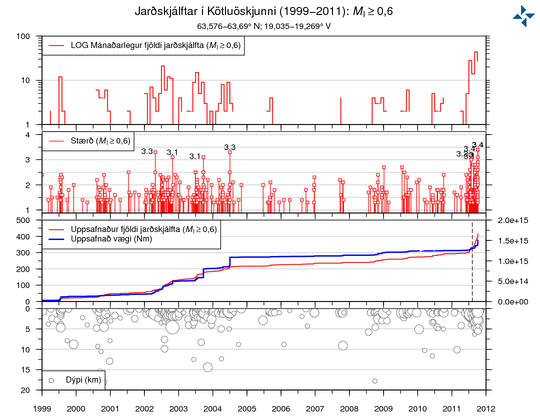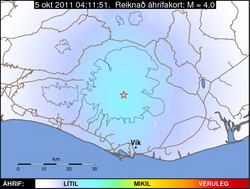Earthquake activity in Katla volcano October 2011
Heightened earthquake activity is presently occurring in the Katla volcano, southern Iceland. Earthquakes are taking place within the volcano's caldera, which is covered by the Mýrdalsjökull ice-cap. The current period of unrest began in July 2011, when a short-lived glacial flood burst from Mýrdalsjökull in connection with increased seismicity. Since then, several hundred micro-earthquakes have taken place within the area of the caldera. The enclosed graph shows how the ongoing activity compares to earlier episodes of seismic unrest at Katla in 1999 and 2002-2004.
In the early hours of today, 05 October 2011, an intense swarm of earthquakes was registered in the Katla caldera; the largest of these earthquakes had a local magnitude of ~3.7. Most of the ongoing seismicity is sourced at shallow (< 5 km) depths.
There are presently no measurable signs that an eruption of Katla is imminent; however, given the heightened levels of seismicity, the situation might change abruptly. Monitoring teams at IMO are following the ongoing activity closely, and sensor-based networks around the volcano ensure that all seismological, geodetic, and hydrological changes are detected.
Historically, Katla is one of Iceland's most frequently erupting volcanoes. The last eruption to break the ice surface of Mýrdalsjökull occurred in 1918, and it lasted about a month.





